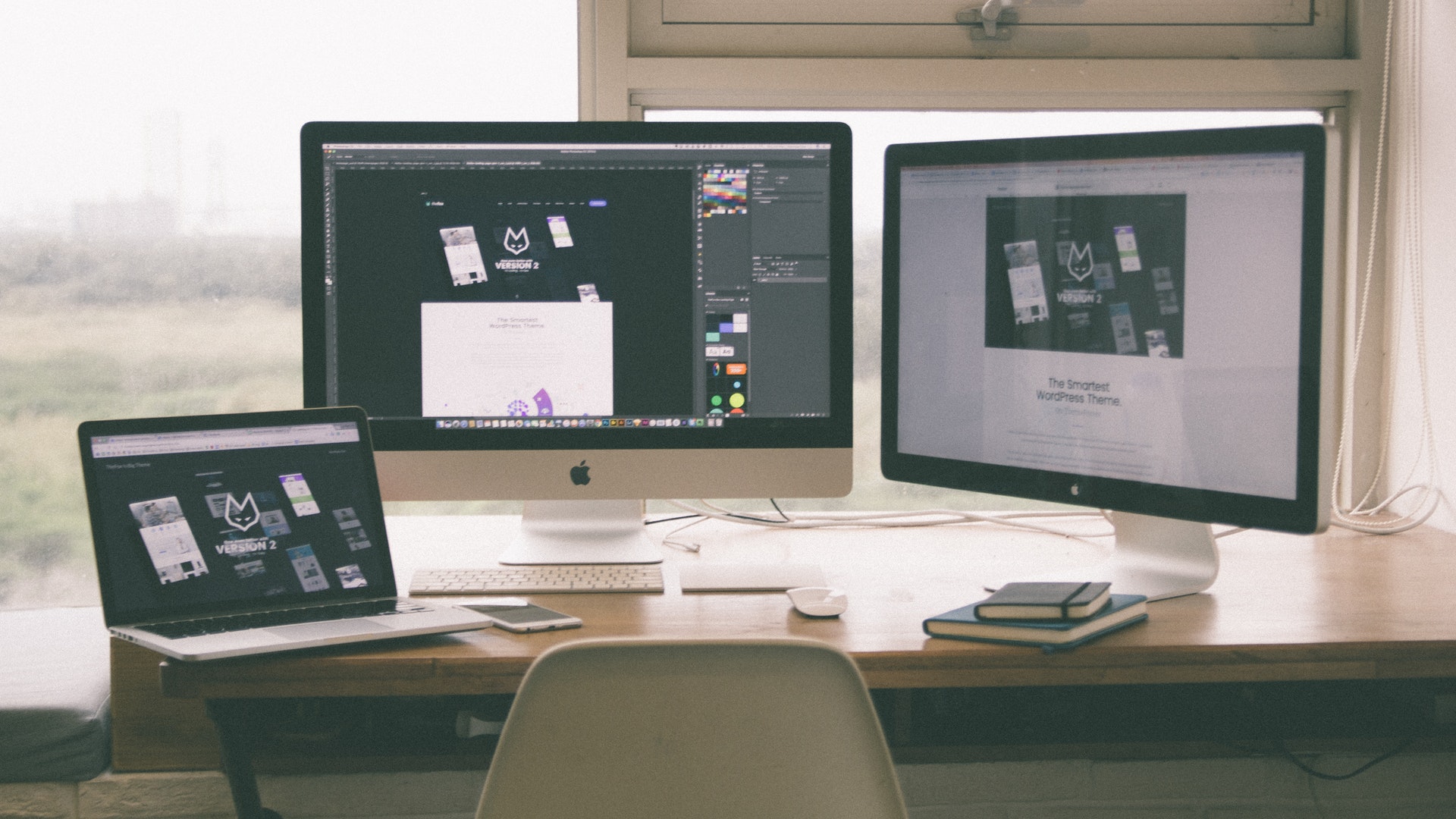How good, simple web design can really help your website perform better
Simple, easy-to-use web design can work wonders

Web design is a key part of creating a top-performing, attractive website that can turn visitors into customers. After choosing a web hosting provider from the best web hosting services, you can utilize one of the best website builders to produce your site, but web design and informative, useful content must be planned out first.
Ensure that your site is easy-to-use, because modern internet users visit websites expecting to be able to understand how a site works on a first visit. Should it confuse them, and you've got an ecommerce website, they'll likely head to a competitor's site instead, meaning you'll have lost a potential customer.
If your site is well-designed, it can subconsciously lead your visitors exactly where you want them to go to, and help streamline the passage from your initial landing page right through to the checkout. By making every step intuitive and easy to follow, web design can help you to subtly sell your value proposition.
Though every online store and business is different, they can all employ similar tricks to improve web design, and thus improve website traffic and most importantly sales. Read on to find out what you can change to improve your web sales.
Web design: Learning from print media
Traditional print media may seem like a dinosaur compared to digital media, but how people interact with websites mirrors how they read physical newspapers and magazines.
The home page of a website is like the front page of a newspaper. There’s usually a logo, several main headlines and stories, and sections pointing to other pages where the reader can find more information on the topics they are most interested in.
It’s fine to have a site brimming with pages full of useful, exciting content, but you shouldn’t try to cram as much information into the home page as a newspaper does on its front page. The home page should be simple, uncluttered, and make it clear how the website can be navigated.
Sign up to get the BEST of Tom's Guide direct to your inbox.
Get instant access to breaking news, the hottest reviews, great deals and helpful tips.
Sub-pages shouldn’t deviate from the basic navigational structure introduced on the home page. Consider differentiating each type of content by giving it a different color. For example, set shopping cart elements as one color and informational elements as another. Maintain that scheme throughout the whole website, so the visitor will always know how to get to the content they need.
Below, we outline 10 design choices that always improve a website, and 10 that should always be avoided.
Web design dos
1. Be age aware
If you have an older readership, avoid small fonts. Serif fonts are also more difficult to read, so don’t use them.
2. Use the logo
Visitors expect to be able to return to the home page from every page on your website. Typically, this should be via your company logo, situated at the top left of each page.
3. Use a footer
Include a footer on every page that links to important information, such as opening hours or how to contact your company.
4. Remember mobile users
Your website should work on mobile phones just as well as it works on desktop computers. Sometimes, you will need to modify how your site looks and functions on mobile devices to accommodate smaller screens. If your website is image-heavy, consider that lower-resolution images will load faster and use less bandwidth while also reducing your web hosting service fees.
5. Speed is critical
A slow site will cause visitors to become frustrated quickly, so make sure you are using a fast web hosting service with a good track record. Pay particular attention to the homepage when optimizing the speed of your website, as it is your most-visited page.
6. Consider the disabled
A significant proportion of web surfers are disabled, so take steps to ensure your website can be browsed by them. Web design guidelines created by the Web Accessibility Initiative (WAI) outline how to ensure everyone can understand, navigate, and interact with your website.
7. Count those clicks
Using web analytics tools, you can see which of your pages on your site are the most popular. Count how many clicks it takes to get from your site’s homepage to these pages, and consider rearranging your site’s structure to make it easier to get to these pages.
8. Show color control
It is common to create a color scheme for your website by pairing those from your company logo with complementary and contrasting colors. Once you’ve chosen a scheme, investigate if it is readable by someone with a visual impairment or color blindness.
9. Use bigger pictures
Big, bright images draw a visitor’s attention and sell your products to them. Still, larger images will impact load times and increase the bandwidth costs charged by your web hosting service. Optimize larger images for the web by using image compression, making them faster to load without reducing the quality too much.
10. Big buttons
Call to action (CTA) buttons encourage visitors to perform those important actions you want them to make, such as adding a product to their shopping cart. Ensure these buttons are big, bright, and obvious on every page.
Web design don’ts
1. Stay away from some web technologies
Web technologies like Flash and Java that don’t work on all systems should generally be avoided, as they reduce your website’s potential audience.
2. Don’t use sidebars
Because banner ads in sidebars have become the norm, people have learned to tune them out automatically when reading a website. Therefore, avoid using sidebars for your important content.
3. Keep fonts under control
Keep the number of different fonts you use on your website to a minimum. As a rule, two to three fonts are more than enough.
4. Limit scrolling
You should include the most important information on your site ‘above the fold,’ meaning readers shouldn’t need to scroll down to get to the main focus of each page.
5. Never underline text
You should avoid underlining text, as users will confuse it with a clickable hyperlink.
6. Avoid lengthy forms
Every field you add to a form requires effort from a visitor. Many people will simply click away when faced with a lengthy form. Keep forms short, and only ask for the information you really need from the visitor to get them to the next stage in the buying process.
7. Don’t be rude
Avoid pop-ups that bombard the visitor as soon as they hit your homepage for the first time. They’re annoying and ineffective.
8. Don’t be long-winded
As a rule, online text should have fewer than 20 words per line, because long lines are hard to read. Paragraphs should normally not be longer than 50 words in length.
9. Never overload a page
While it’s tempting to include a lot of content showing why your products and services are the best, remember that less is more. Use white space to increase readability, and move some of the information on busy pages to sub-pages.
10. Avoid auto-run objects
Avoid automatically playing sounds or video when visitors first arrive on a page. Leave it to the visitor to decide if they want to play these elements.
Final thoughts on web design
Familiarity with your own website can make finding problems with its design difficult. Therefore, it’s important to get someone who is unfamiliar with your site to test every part of it and give you valuable feedback.
If you don’t know where to start with a new website design, jot down 10 websites you visit often, and what you like about their design. Also, write down anything you think could be improved upon. This will give you a shortlist of things to aim for in your new site design.
Accept that most website designs are imperfect at first and need to be tweaked. Finally, don’t be afraid to break the mold. The trick is to have a memorable web design that differentiates you from the competition without being confusing or annoying.
Further reading on website builders
If you're looking to create your first site, learn what type of site is right for you in our guide to building a website. If you've chosen your builder, but don't know where to start, read our step-by-step guide on how to build a website from scratch.
We've also got some other features related to boosting your website, including options for free website content, and 10 ways to improve your website branding.
Mark is an expert on displays, reviewing monitors and TVs. He also covers storage including SSDs, NAS drives and portable hard drives. He started writing in 1986 and had contributed to MicroMart, PC Format, 3D World among others.

